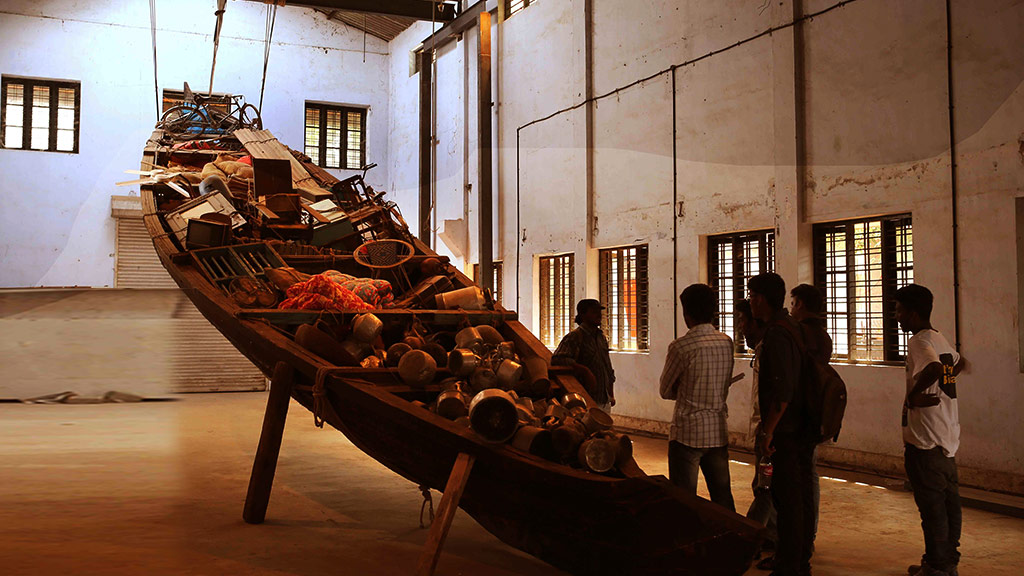
The preeminent art festival, which attracts tourists and spectators from around the world, is finally on track after getting postponed for two years due to the pandemic.
The Kochi-Muziris biennale opens its doors to the public on December 12 despite several art pieces still unfinished or in transit. Bose Krishnamachari, president of the Kochi-Muziris biennale, says that this has not put a damper on the excitement of the participants.
The theme of the Kochi-Muziris biennale is “In Our Veins Flow Ink and Fire”. Over 90 artists from around the globe are participating in it. The festival is curated by Singapore-based artist Shubigi Rao.
Despite receiving the go-ahead, the biennale has been beset by several challenges. A majority of the pieces have been digital, as travel restrictions and delays due to the pandemic have impacted on-site productions majorly. Undeterred by these challenges, the artists have created several go-arounds, using media like music and sound to enhance their pieces, says Rao.
The Kochi-Muziris Biennale is spread all over Kochi, including Pepper House, Anand Warehouse, and Aspinwall House.
This biennale marks the tenth year of the biennale. The first biennale was held in 2012, co-founded, and curated by Riyas Komu and Bose Krishnamachari. Krishnamachari says that the biennale has managed to achieve incredible success in the time period that it has been running, and that it has become an inspiration for several events in the subcontinent. It is a source of pride for the nation.
The vision for the first Kochi biennale was to “create a platform that will introduce contemporary, global visual art theory and practice to India.” It took inspiration from its location, borrowing from Kochi’s rich history as a trading port that was a melting pot for various cultures and communal identities and its cosmopolitan modernity. Kochi is one of the few Indian cities where cultural pluralism flourishes.

What is an art biennale?
An art biennale is a large-scale showcase of art on a two-yearly schedule. They are usually non-commercial, unlike an art fair, which means that one cannot actually purchase any art pieces on display. However, merely being invited to create an art piece for the biennale is a huge honor, and will boost an artist’s visibility massively. The art pieces are typically curated to follow a particular theme.
The history of the Kochi-Muziris Biennale
The first and longest-running Kochi-Muziris biennale in the world is the Venice Biennale. It was established in 1893 by a resolution in the city council, in order to showcase the most talented artists in the nation. The biennale rose in popularity in the 1900s, and countries around the world began to adopt it.
A global biennale foundation was established in 2009 with the directive to “create a platform for dialogue, networking, and knowledge sharing among contemporary art biennials around the world”. There are currently over 200 biennales being held around the world.
The importance of art biennales
Art biennales are a curation of national talent. Although they are not commercial, participation in a biennale is a validation of an artist, a signal that they are being noticed. Art biennales are frequented by the rich and powerful in the art sphere and can open up opportunities for later gallery showings, exhibitions, purchases, and more.
Art biennales are also centered around cities, and boost tourism and local culture, bringing pride to that city. It also brings in a significant revenue stream.












